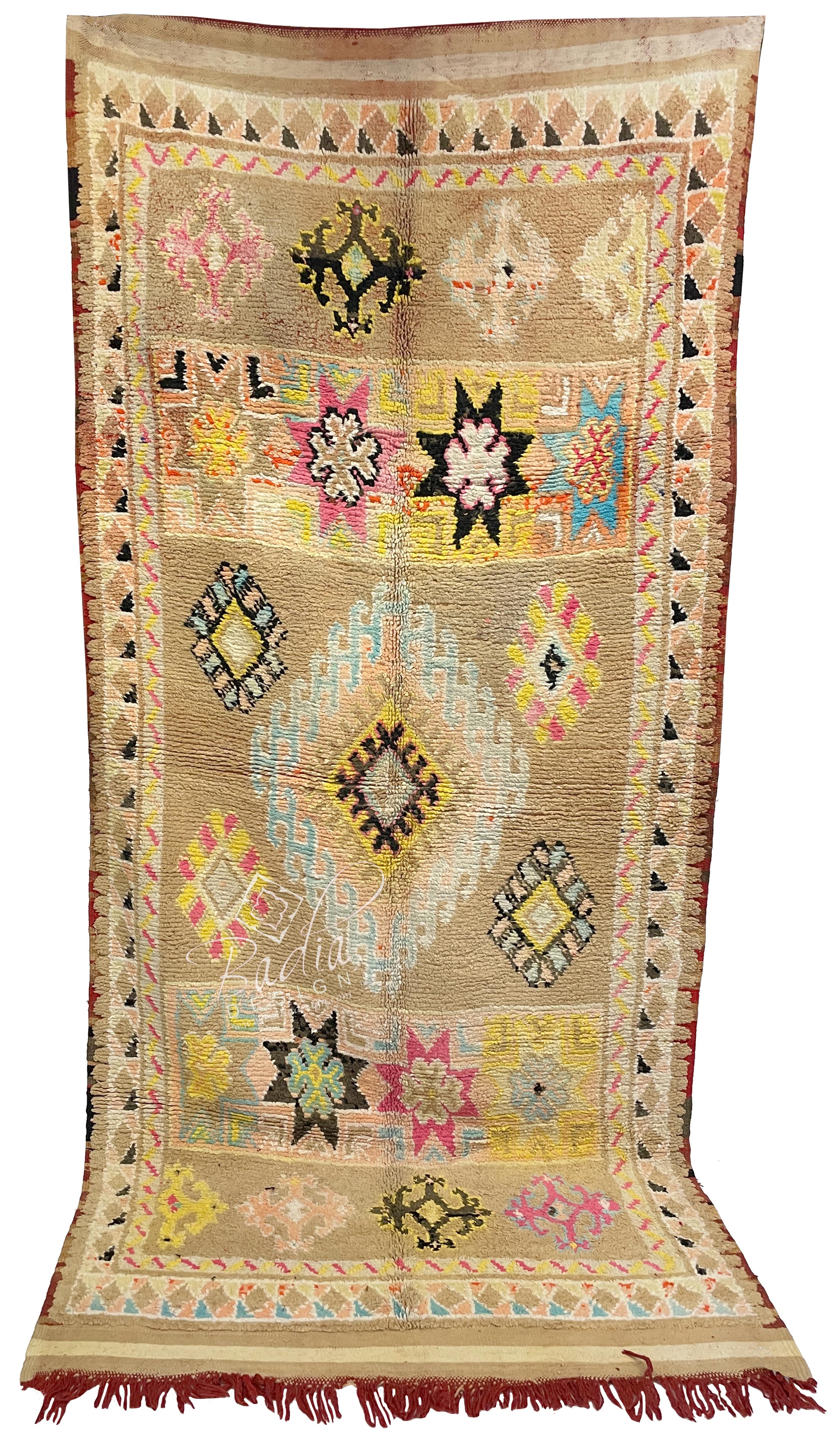Moroccan Berber Rugs: A Fusion of History, Artistry, and Timeless Elegance
Moroccan Berber Rugs have captivated residents and businesses worldwide with their rich history, meticulous artistry, and incomparable adaptability. These rugs can enhance any space, from a welcoming lounge to a sleek office environment. This guide delves into the rich origins of Moroccan Berber rugs, the detailed artistry involved in their production, their renowned durability, and creative ways to incorporate them into today’s interiors.
These rugs originated with the ancient Berber people of North Africa, dating back centuries. The Berbers, with their rich cultural heritage, developed rug-weaving techniques as a practical response of their nomadic lifestyles and diverse climates.
The symbols and motifs in these rugs narrate stories that are specific to the tribe or family of origin. Motifs often symbolize concepts such as protection, nature, or fertility, giving each rug cultural significance. Historically, these rugs were made for practical use, offering warmth in the cold Atlas Mountains or serving as bedding in arid environments.
In the mid-20th century, Moroccan Berber rugs gained international acclaim when renowned visionaries like Le Corbusier and Frank Lloyd Wright featured them in their iconic designs. Now, these rugs are highly sought after for their beauty and historical depth.
The production of Moroccan Berber rugs is an elaborate art form handed down through generations. It represents a perfect blend of ancestral knowledge and artistic skill.
Berber rugs are typically crafted from natural materials such as pure wool, camel hair, or even cotton. Wool stands out for being both durable and cozy, as well as website for its thermal qualities. Artisans often hand-spin the wool, giving each rug a unique look and feel.
Weaving these rugs is an elaborate process, requiring weeks or months on handcrafted weaving tools. The knotting style, from Beni Ourain’s plush textures to Azilal’s tighter weaves, impacts both durability and design.
Artisans rely on natural dyes from the environment to achieve the vivid tones seen in Berber rugs. Earthy tones such as beige, cream, and brown are common in Beni Ourain rugs, while Azilal and Boucherouite rugs showcase bolder colors like reds, blues, and yellows.
One of the key features of Moroccan Berber rugs is their exceptional durability. This makes them a smart choice for both residential areas and commercial spaces.
Berber rugs owe their longevity to the excellent quality of their natural fibers. Wool’s natural flexibility and resistance to stains make it a perfect choice for lasting rugs.
Cleaning and maintaining a Moroccan Berber rug is relatively simple. Routine vacuuming and periodic professional care can preserve their beauty for decades.
How to Decorate with Moroccan Berber Rugs
Incorporating Moroccan Berber rugs into contemporary interiors is easier than you might think. These rugs' adaptability allows them to suit various aesthetics, including minimalist and bohemian styles.
1. Anchor a Living Room
A large Beni Ourain rug can serve as the focal point of your living area. The rug’s muted tones and clean lines bring cohesion to the space and exude coziness.
2. Add Color to Neutral Spaces
If your space leans toward a monochromatic or minimalist aesthetic, a vibrant Azilal or Boucherouite rug can introduce a pop of color and visual interest. They are ideal for subdued settings, acting as the central highlight.
3. Layer Rugs for Texture
For a cozy, eclectic vibe, layer a smaller Berber rug over a larger natural-fiber rug, such as jute or sisal. This combination not only adds depth and texture but also highlights the intricate details of the Berber design.
4. Elevate the Look of Offices and Workspaces
Moroccan Berber rugs are perfect for adding elegance and warmth to professional spaces, including offices and lounges. Their handmade quality conveys a sense of luxury and authenticity.
5. Use as Wall Art
Some Moroccan Berber rugs are so visually stunning that they deserve to be displayed as art. Displaying a Berber rug on a wall highlights its intricate design and cultural significance.
The Value of Moroccan Berber Rugs
Moroccan Berber rugs combine functionality, beauty, and cultural depth, making them a valuable choice for homes and businesses alike. These rugs are built to last, and their classic designs remain relevant despite evolving decor trends.
Sustainability in Moroccan Berber Rugs
Many Berber rugs are crafted using eco-friendly and sustainable practices. By investing in these rugs, you’re not only enhancing your space but also supporting traditional artisans and their communities.
The Appreciating Worth of Moroccan Berber Rugs
Authentic Moroccan Berber rugs often appreciate in value over time, especially vintage or rare pieces. They are both functional decor and collectible assets.
